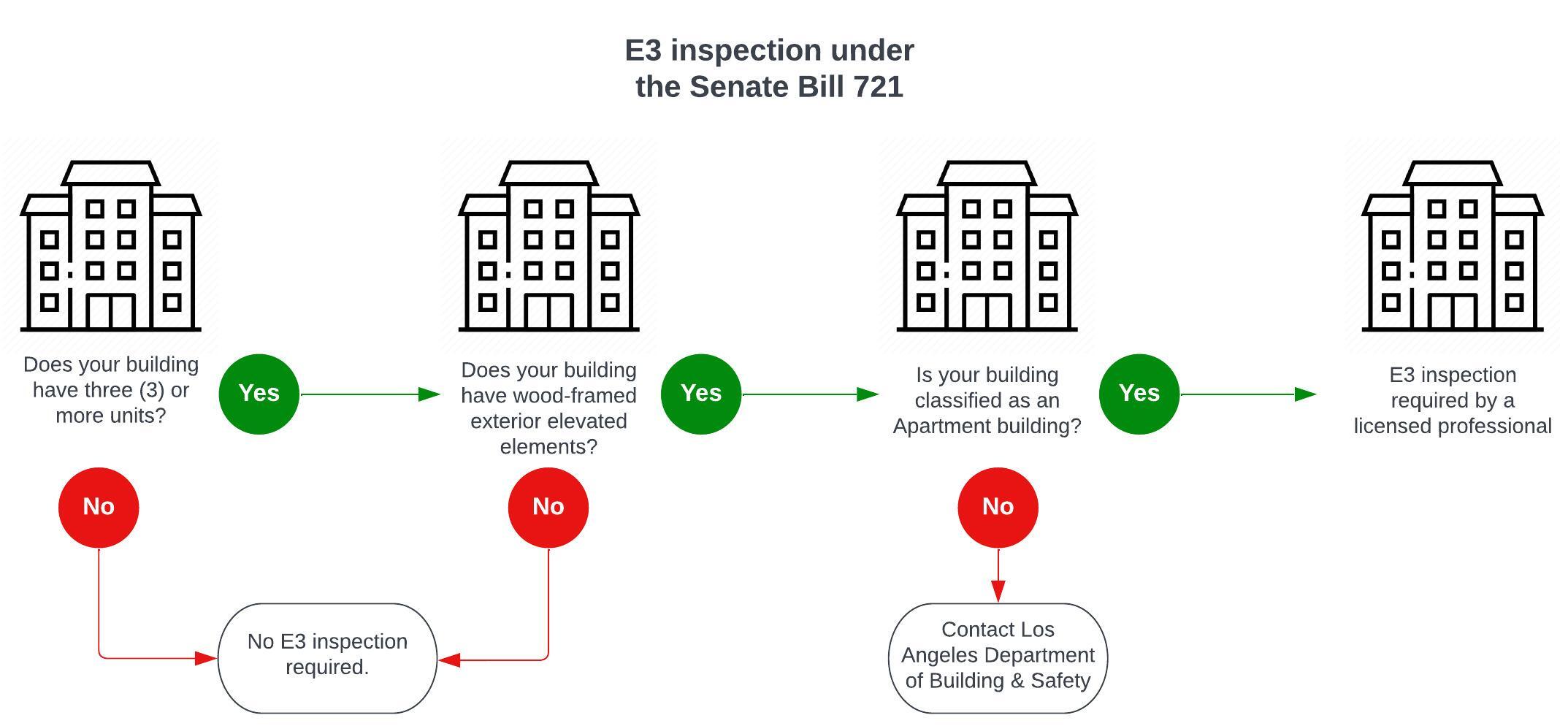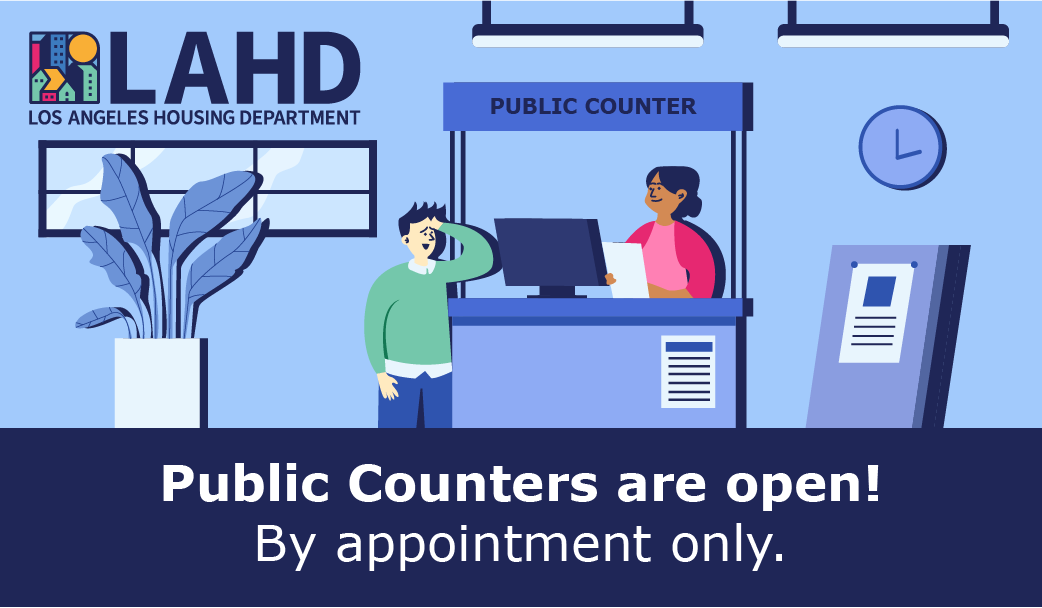Exterior Elevated Elements (E3) Inspection Law – Apartment Buildings
- Introduction:
This webpage is provided for guidance and steps required to be taken regarding the E3 inspection law as it applies to multi-unit apartment buildings. If you would like to know about E3 inspection law for condominium buildings, kindly contact the City of Los Angeles Department of Building and Safety by clicking here. In general, E3 inspection law for multi-unit apartment buildings applies as follows:

- The Law: To read the entire E3 inspection law, click here. Please note that this link will take you to the California Legislative Information website.
- Summary of the Law
This summary constitutes no part of the law. It has been prepared by LAHD staff for the convenience of the reader. Refer to the law and/or a licensed professional for compliance with the law.
- Owners of multi-unit apartment buildings with exterior elevated elements which are located more than six feet above adjacent grade, such as decks or stairways, must hire a licensed professional to perform a safety inspection.
- The purpose of the inspection is to determine that exterior elevated elements and their associated waterproofing elements are in a generally safe condition, adequate working order, and free from any hazardous condition caused by fungus, deterioration, decay, or improper alteration to the extent that the life, limb, health, property, safety, or welfare of the public or the occupants is not endangered.
- Licensed professional hired by the building owner to perform these inspection cannot be an employee of the City of Los Angeles and includes:
- Licensed architect;
- Licensed civil or structural engineer;
- A building contractor holding any or all of the “A,” “B,” or “C-5” license classifications issued by the Contractors State License Board, with a minimum of five years’ experience, as a holder of the aforementioned classifications or licenses, in constructing multistory wood frame buildings;
- An individual certified as a building inspector or building official from a recognized state, national, or international association.
- Except as otherwise provided by the E3 law, the required safety inspection must be completed by January 1, 2025, and by January 1 every six years thereafter.
- The licensed professional must provide a stamped/signed written report of the evaluation to the owner of the building or the owner’s designated agent within 45 days of completion of the inspection.
- A copy of any report that recommends immediate repairs, advises that any building assembly poses an immediate threat to the safety of the occupants, or that preventing occupant access or emergency repairs, including shoring, are necessary, shall be provided by the licensed professional to the owner of the building and to the local enforcement agency within 15 days of completion of the report. Instructions provided below to submit a report.
- An exterior elevated element that the inspector advises poses an immediate threat to the safety of the occupants, or finds preventing occupant access or emergency repairs, including shoring, or both, are necessary, shall be considered an emergency condition and the owner of the building shall perform required preventive measures immediately. Immediately preventing occupant access to the exterior elevated element until emergency repairs can be completed constitutes compliance.
- The owner of the building requiring corrective work to an exterior elevated element that, in the opinion of the inspector, does not pose an immediate threat to the safety of the occupants, shall apply for a permit within 120 days of receipt of the inspection report. Once the permit is approved, the owner of the building shall have 120 days to make the repairs unless an extension of time is granted by the local enforcement agency.
- The continued and ongoing maintenance of exterior elevated elements in a safe and functional condition in compliance with E3 inspection law shall be the responsibility of the owner of the building.
- How to Submit a Report
- The licensed professional who conducts the E3 inspection must submit an inspection report to the Los Angeles Housing Department if:
- The report recommends immediate repairs, advises that any building assembly poses an immediate threat to the safety of the occupants, or that preventing occupant access or emergency repairs, including shoring, are necessary.
- The report recommends corrective work to an exterior elevated element that does not pose an immediate threat to the safety of the occupants and the property owner has not complied with repair requirements.
- The report shall be submitted to the Los Angeles Housing Department as follows:
- Within 15 days of completion of the inspection for reports that recommends any immediate repairs, advises that any building assembly poses an immediate threat to the safety of the occupants, or that preventing occupant access or emergency repairs, including shoring, are necessary.
- The report recommends corrective work to an exterior elevated element that does not pose an immediate threat to the safety of the occupants and the property owner has not complied with repair requirements within 180 days.
- The licensed professional shall submit the report to the Los Angeles Housing Department using the following link: https://forms.gle/xZMbYTU6VRp5uBjF6
- No report is required to be submitted if the licensed professional who conducts the E3 inspection concludes that no emergency repairs or corrective work is required.
- The licensed professional who conducts the E3 inspection must submit an inspection report to the Los Angeles Housing Department if:
(Visited 6,753 times, 1 visits today)



